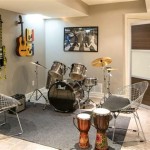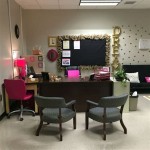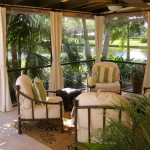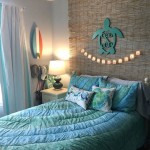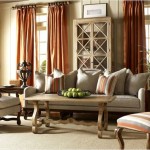Top Living Room Decor Trends to Elevate Your Space
The living room serves as the heart of any home. It's a space for relaxation, entertainment, and connection with loved ones. As such, creating a living room that is both aesthetically pleasing and functional is crucial. Staying abreast of current decor trends can provide inspiration and guidance in achieving this goal. This article explores some of the prevailing trends in living room decor, offering insights into how to incorporate them into your own home.
Embracing Natural Elements
A significant trend in recent years involves incorporating natural elements into the living room. This encompasses a broad range of materials, textures, and colors that draw inspiration from the outdoors.
One prominent application of this trend is the use of natural materials. Furniture crafted from wood, especially reclaimed or sustainably sourced wood, is highly sought after. Wood coffee tables, side tables, and shelving units add warmth and character to the space. Rattan and wicker are also making a comeback, appearing in chairs, baskets, and even light fixtures. These materials introduce a rustic and organic feel, connecting the living room to the natural world.
Stone is another natural element gaining popularity. Stone fireplaces remain a classic feature, but stone accents can also be incorporated in other ways. Stone veneer walls, stone coffee tables, or even carefully placed stone sculptures can add texture and visual interest. The cool, grounding effect of stone balances the warmth of wood and other materials.
The use of plants is also a cornerstone of this trend. Indoor plants not only enhance the aesthetic appeal of the living room but also improve air quality and create a sense of tranquility. A variety of plants, from large statement pieces like fiddle-leaf figs to smaller succulents and trailing vines, can be used to create a lush and inviting atmosphere. Consider using natural fiber planters made from materials like jute or seagrass to further enhance the natural aesthetic.
Color palettes that reflect nature are essential to this trend. Earth tones, such as browns, greens, creams, and beiges, create a calming and grounding effect. These colors can be incorporated through paint, upholstery, rugs, and accessories. Accents of blues and greens can evoke the feeling of water and foliage, further enhancing the connection to the natural world. Consider incorporating pops of brighter colors inspired by flowers or sunsets to add visual interest and prevent the space from feeling too monotonous.
Prioritizing Comfort and Functionality
While aesthetics are important, comfort and functionality are equally crucial considerations in living room decor. The living room should be a space that is conducive to relaxation and caters to the needs of its occupants.
Comfortable seating is paramount. Sectional sofas remain a popular choice due to their versatility and ability to accommodate large groups. Opting for deep seating with plush cushions and soft, durable fabrics is essential. Modular sofas offer even greater flexibility, allowing the configuration to be adjusted to suit different needs. Consider incorporating accent chairs in a variety of styles and materials to provide additional seating options and visual interest. Oversized armchairs and cozy lounge chairs are particularly appealing for creating a comfortable reading nook.
Thoughtful storage solutions are critical for maintaining a functional and organized living room. Built-in shelving units are an excellent way to maximize space and provide storage for books, media equipment, and decorative items. Console tables behind sofas can also serve as storage and display areas. Baskets and ottomans with hidden storage compartments are ideal for concealing clutter and keeping the space tidy. The key is to integrate storage seamlessly into the design, ensuring that it is both functional and aesthetically pleasing.
Lighting plays a vital role in creating a comfortable and functional living room. Layered lighting, which combines ambient, task, and accent lighting, is essential. Ambient lighting provides overall illumination, while task lighting focuses on specific areas, such as reading nooks. Accent lighting is used to highlight architectural features or decorative objects. Dimmable lights are a valuable addition, allowing the lighting to be adjusted to suit different activities and moods. Consider using a combination of floor lamps, table lamps, and recessed lighting to achieve optimal lighting levels.
Technology integration is also an important aspect of functionality. Concealing wires and cables is crucial for maintaining a clean and uncluttered look. Consider using cable management systems or incorporating technology-hiding furniture. Optimizing the layout for viewing screens and accessing outlets is also essential for creating a functional and enjoyable entertainment space.
Incorporating Personal Touches and Eclectic Styles
While following trends can be helpful, it is important to personalize the living room to reflect individual tastes and preferences. Incorporating personal touches and embracing eclectic styles can transform a generic space into a unique and inviting haven.
Displaying personal collections is a great way to add character and individuality to the living room. Whether it's a collection of books, art, or travel souvenirs, showcasing these items in a curated and thoughtful manner can tell a story and spark conversation. Arrange items on shelves, coffee tables, or walls to create visually appealing displays. Consider using different heights, textures, and colors to add dimension and prevent the display from looking cluttered.
Mixing and matching different styles is a key element of the eclectic aesthetic. Combining traditional and modern furniture, incorporating vintage pieces, or blending different cultural influences can create a unique and visually interesting space. The key is to find a common thread that ties the different elements together, such as a shared color palette or a similar style of hardware. Be mindful of proportion and scale to ensure that the different pieces complement each other.
Art plays a crucial role in personalizing the living room. Choosing artwork that resonates with personal tastes and preferences can elevate the space and add a touch of sophistication. Whether it's a collection of original paintings, prints, or photographs, art can be used to express individuality and create a focal point. Consider the size, color, and style of the artwork in relation to the rest of the room. Experiment with different arrangements and placements to find the most visually appealing configuration.
Adding personal touches through textiles is another effective way to personalize the living room. Throw pillows, blankets, and rugs can be used to add color, texture, and pattern. Consider incorporating handmade or vintage textiles to add character and uniqueness. Mixing different patterns and textures can create a visually rich and layered effect. The key is to choose textiles that complement the overall color palette and style of the room while also reflecting personal tastes.
When designing, it's important to remember that the living room is a reflection of the individuals who inhabit it. By incorporating personal touches and embracing eclectic styles, the living room can be transformed into a unique and inviting space that truly feels like home.

75 Beautiful Living Room Ideas For Decorating Inspiration

90 Modern Living Room Ideas For The Ultimate Hangout Spot

Top Home Decor Trends Best Living Room Ideas

75 Beautiful Living Room Ideas For Decorating Inspiration

90 Modern Living Room Ideas For The Ultimate Hangout Spot

Modern Living Room Interior Design

5 Stunning Drawing Room Designs And Decor Ideas By Livspace

75 Beautiful Living Room Ideas For Decorating Inspiration

Engaging Low Profile Interior Design A Modern Comfortable And Unique Style

95 Inspiring Living Room Ideas To Create A Comfortable Space


